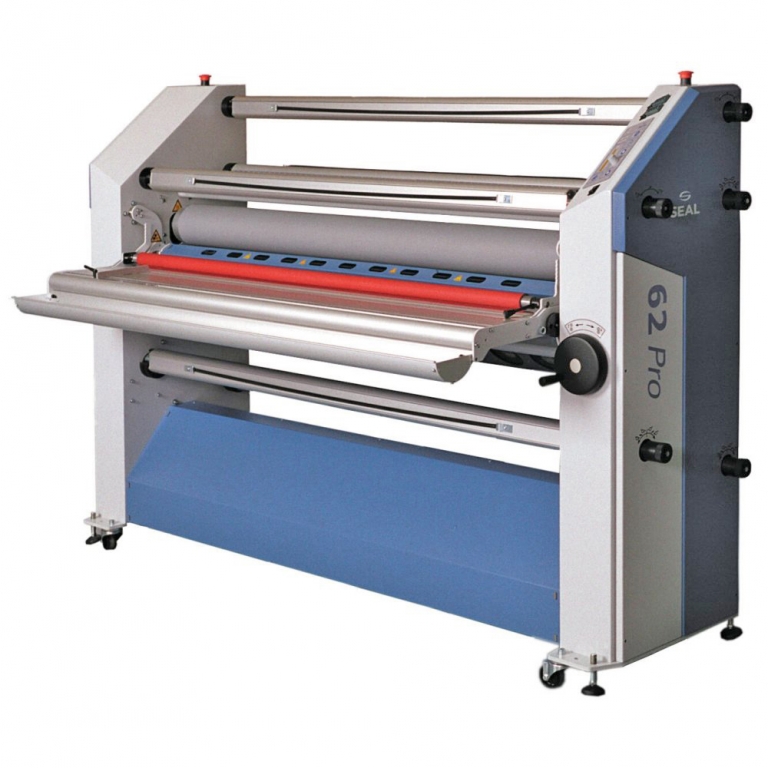In medieval times, military leaders wrapped their knights in suits of armor – bronze or iron – to protect their bodies from the rigors of war. Even today, soldiers and many police officers wear bulletproof vests as a means of protection. In a somewhat similar manner, digital prints need protection from harsh environments and proper, clear lamination can act as a type of armor. Unless you’re producing prints only for indoor applications, a laminator should operate alongside your digital printer.
Lamination is a process by which a clear, protective coating is positioned atop a printed graphic to protect it. In many cases, the process will enhance the image because certain types of lamination add a visual intensity to prints by increasing gloss and enlivening colors. Conversely, a matte finish laminate will, of course, reduce glare and tamp down colors’ brightness. Laminates come in two forms: liquid and film. The liquid type is squeegeed atop the print surface, which is then air dried; the film is pressure applied with a roller-equipped machine, a “laminator,” that may or may not add heat during the process. The laminate’s main function is to protect the print. It also adds UV and moisture protection, as well as scratch resistance to the printed image and also provides a “suit of armor” to safeguard the print from common chemicals and detergents.
LIQUID OR FILM?
Which should you choose? Liquid laminates are often water based, and, as noted above, the fluid is squeegeed over the image as a uniform coat or applied by an automatic liquid coater. Liquid’s major advantage is lower cost – we estimate between $0.08-0.26 per sq. ft., versus $0.80 per sq. ft. for a film laminate. Liquid’s downside is that the treated images may not be as durable as those protected with a film laminate, and you may not be able to laminate water-based ink prints successfully. You may also come across UV-cure liquid laminate fluids that, obviously, require a UV-lamp process to cure; and solvent-based liquid laminates that require specialized ventilation equipment as a safety factor. Also know that liquid coating machines (aka “roll coaters” and “roller coaters”) are available for directly applying liquid coating – glue, clear coat and color coat – in programed depths to the top and/or bottom of flat and dry sheets, wood, glass, acrylic, plastic, sheet metal and more. We’ll add that because of the cost factors, many producers of numerous commercial vehicle wraps prefer liquid laminate.
COLD OR HOT?
Cold-roll laminators comprise a set of rollers that pressure-adhere the laminate film to the print. Today, you can order cold-laminate films for virtually every application, but be advised that the cost for cold-laminate film may be higher than for hot-laminate film. A key advantage is that no heat will be applied; therefore, a cold laminator should process virtually any flat media.
Hot laminators are like cold laminators but feature heating elements within the rollers for heat-activated adhesive films. As mentioned above, heat-activated films cost less than equivalent cold films but the machines are higher priced and may require an exclusive power source. Choosing a dual-function hot/cold laminator may be the best of both worlds.
An alternative to traditional roll laminators are flatbed roller tables that cold laminate images, apply pre-mask over cut vinyl, or mount a printed graphic to a flat board. Whichever you choose, ensure that your roll laminator width matches or exceeds the widest media your printer will process.
Advertisement
CAR WRAPS
For such applications as vehicle wraps, lamination is a real necessity, but study both the media and ink manufacturers’ fact sheets and warranties to determine what type of laminate is required and if the media warranty holds if you vary the laminate method or type. Consider the calamity if, during weather temperature extremes, the installed laminate shrinks or expands at a rate different than the printed vinyl.
If your shop has a wide-format printer, adding a laminator makes sense; if you intend to buy a printer, add a laminator to your list. Once you have one, you’ll find laminate applications that enhance your print handiworks and help you sell a wider variety of products.



 Tip Sheet1 week ago
Tip Sheet1 week ago
 Photo Gallery2 days ago
Photo Gallery2 days ago
 Ask Signs of the Times4 days ago
Ask Signs of the Times4 days ago
 Real Deal1 week ago
Real Deal1 week ago
 Benchmarks6 days ago
Benchmarks6 days ago
 Women in Signs1 week ago
Women in Signs1 week ago
 Photo Gallery1 week ago
Photo Gallery1 week ago
 Women in Signs1 week ago
Women in Signs1 week ago









